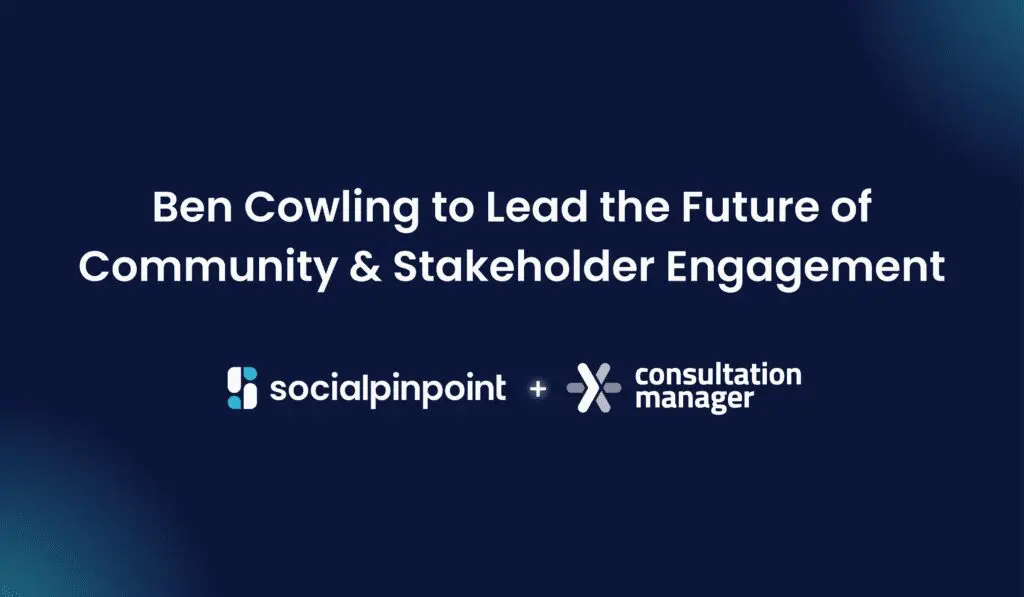Effective engagement in health means more than just communication; it involves building trust, encouraging participation, and ensuring all voices are heard in decision-making. This article explores strategies for promoting meaningful engagement in health, providing real-world examples of successful initiatives. By understanding these approaches, healthcare professionals can create more inclusive, responsive, and patient-centered systems that meet the needs of those they serve.
Explore South Metropolitan Health Service’s audio message evaluation, discover Western NSW Local Health District’s expansion of Palliative Care Units, check out The Social Deck’s National Autism Strategy, plus much more!
Audio Message Evaluation
The South Metropolitan Health Service, part of the Government of Western Australia, sought input from the community to help determine the preferred audio message that will be played over a loudspeaker at Fiona Stanley and Fremantle Hospitals’ entrances.
By introducing a button for residents to listen to the audio message, the South Metropolitan Health Service utilized the Form tool to engage with residents by asking questions about their preferences. A slider option was also used allowing residents to indicate if they agree or disagree with the following statement: “The second part of the audio message is an effective way to remind people that the hospital grounds are smoke-free.” The Health Service also featured images of the hospital entrances where the audio message would be located. Well done to the South Metropolitan Health Service for encouraging community feedback! Listen to South Metropolitan’s audio message here.
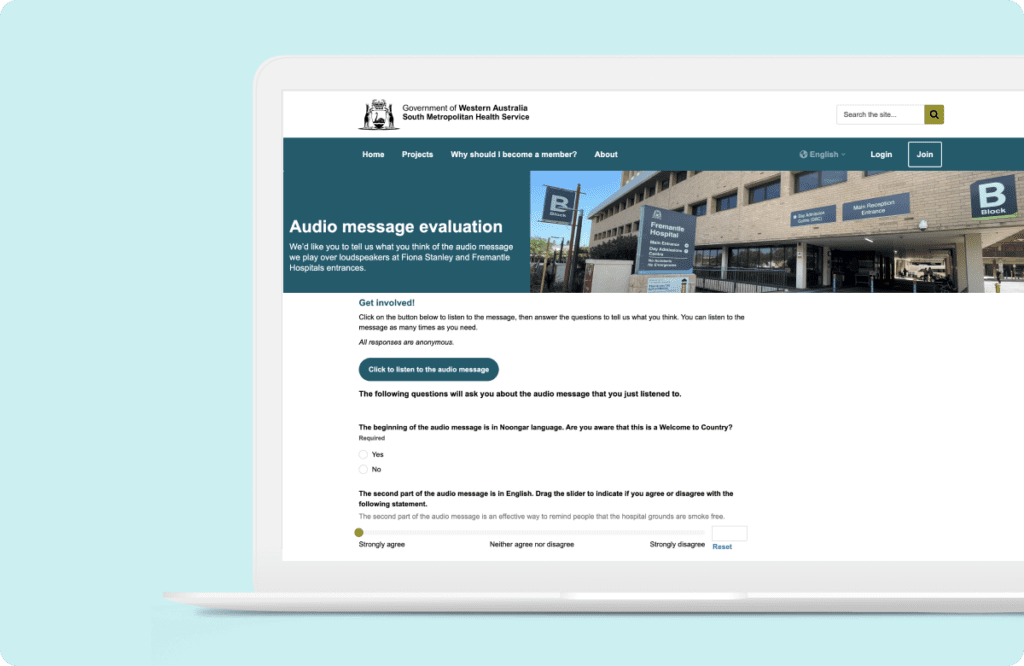
Expansion of Palliative Care
The palliative expansion at Orange is a part of the $93 million commitment by the NSW Government to redevelop and refurbish Palliative Care Units across the state. To support this initiative, the Western NSW Local Health District actively sought input from the community to gather feedback on the planning and design aspects of its palliative care expansion for Orange Hospital. This feedback will play a crucial role in shaping the design and supporting individuals in need of palliative care or end-of-life care.
During the consultation period, the Health District employed a combination of face-to-face and online engagement techniques, including the use of the Form tool. This tool enabled community members to prioritize options from most to least important based on their preferences, including how to make the hospital more comfortable and calming, as well as room features and support services. Great job, Western NSW Local Health District, on actively involving the community in the decision-making process. Explore the expansion of the Palliative Care Unit.
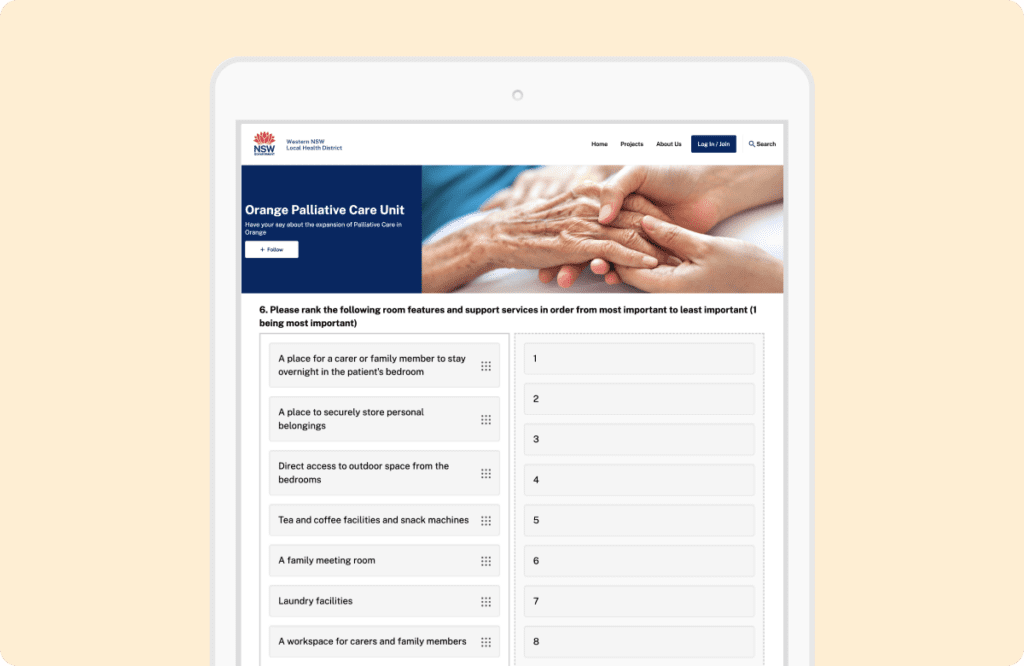
Autism Strategy Discussion Board
The Social Deck (a for-purpose business specialising in strategic communications, stakeholder and community engagement, digital strategy, social marketing campaigns and evaluation) is currently seeking input from community members regarding ideas on what should be included in the National Autism Strategy and how it should be structured. Social Deck is particularly interested in ideas surrounding four discussion areas:
1. Social inclusion
2. Economic inclusion
3. Diagnosis, services and supports
4. Health and mental health
To support this initiative, the Social Deck utilized Feature Grids to present information visually and reduce text-heavy content. This allows community members to explore each of the four sections according to their interests and preferences. For each section, the Social Deck employed the Gather tool, enabling people to leave comments, discuss, and share ideas on what should be included in the National Autism Strategy. Congratulations to Social Deck on fostering an inclusive space for community engagement and for gathering over 270 ideas to improve the National Autism Strategy! Discover ideas for the National Autism Strategy here.
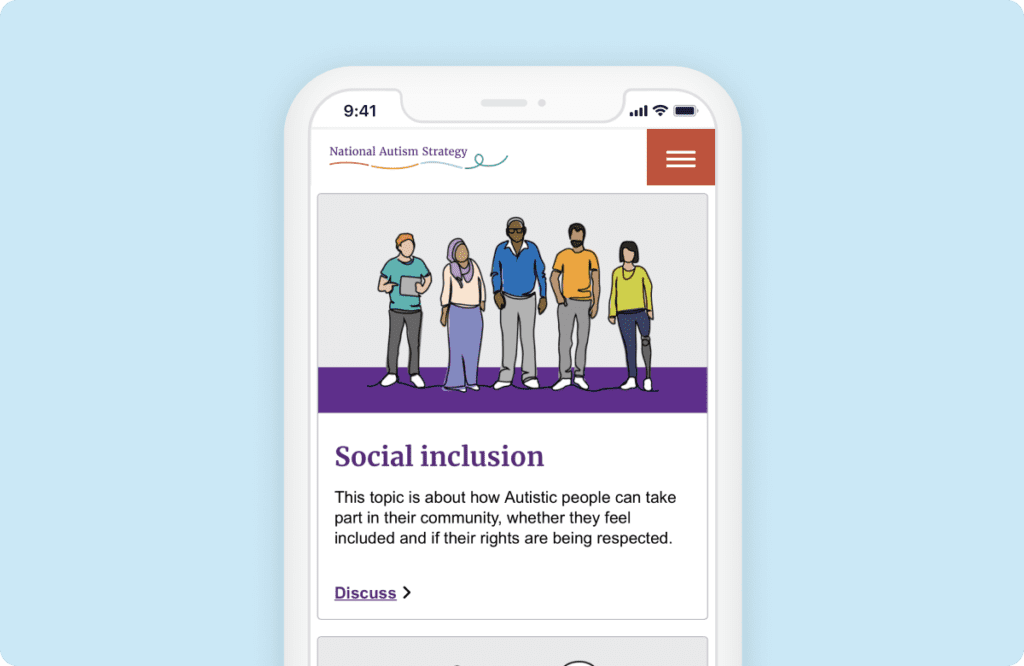
Message of Hope and Recovery
Murrumbidgee Local Health District is actively encouraging community members to spread messages of hope and recovery as part of their initiative to support individuals facing mental health challenges, drug and/or alcohol use, or similar difficulties.
As part of this initiative, Murrumbidgee has implemented the Gather tool, which invites community members to leave comments tagged with relevant issues. This feature also allows others to like these comments, fostering a supportive and interactive environment for those in need. Well done, Murrumbidgee, for creating a collaborative space where positive messages can uplift and provide encouragement to individuals during their recovery journey. While feedback has just begun, we hope you will see lots of public participation! View Murrumbidgee’s messages of hope and recovery.
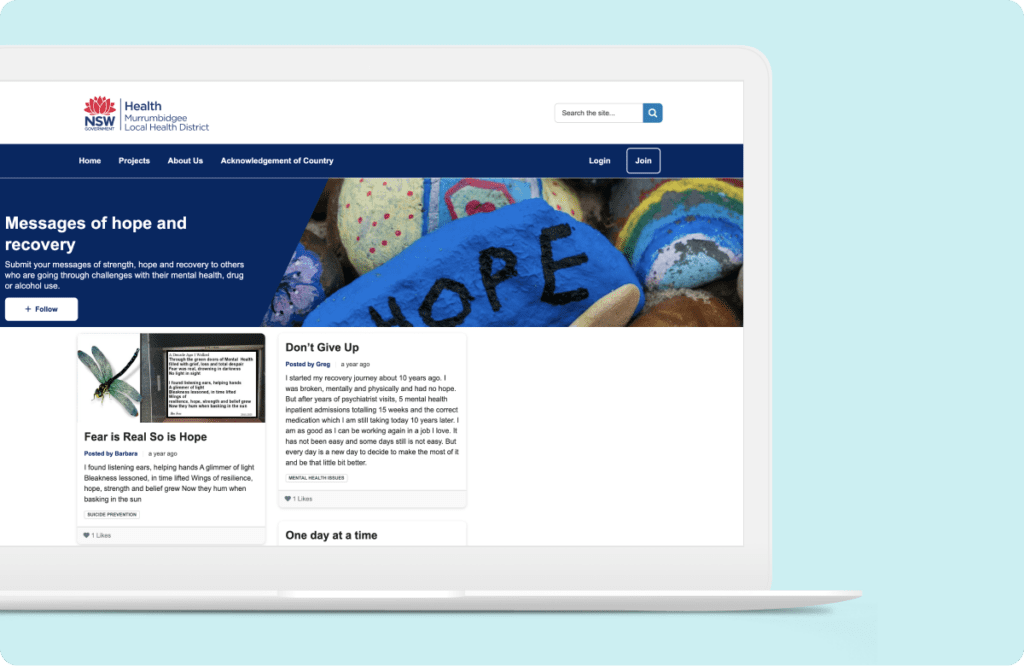
How to Promote Meaningful Engagement in Healthcare
Promoting meaningful engagement in healthcare requires a multifaceted approach that prioritizes inclusivity, transparency and elements of privacy and empathy.
Firstly, gather diverse perspectives by actively listening to your community’s needs and concerns and using digital and in-person surveys, focus groups, and public forums. As this is health related sometimes this will need to be done on a 1 to 1 basis which can be achieved online in private or in-person.
Next, establish clear and open channels of communication where consumers and patients can easily access information and provide feedback in a safe and secure way. For instance, you can utilize digital tools via engagement platforms like Social Pinpoint, which offers a wide suite of fun and interactive digital engagement tools to better reach a larger audience and facilitate real-time participation from members of the community. These platforms offer a safe way to engage and can ensure complete privacy of the often personal health related data being shared.
Incorporate advisory groups or similar forums to maintain privacy in engagements discussing sensitive topics, ensuring a safe environment for open dialogue. This can be facilitated through private pages, allowing for more focused and confidential discussions and can even be completed in small groups, even 1 to 1 where more empathy is needed in the stories being shared .
Lastly, always remember to have close-the-loop communication by regularly updating consumers and patients on how their input has or is influencing decisions. Where clearly possible demonstrate that their contributions are valued and impactful.
By implementing these strategies, healthcare professionals can create a more engaged and empowered community, leading to better health outcomes and stronger relationships.



